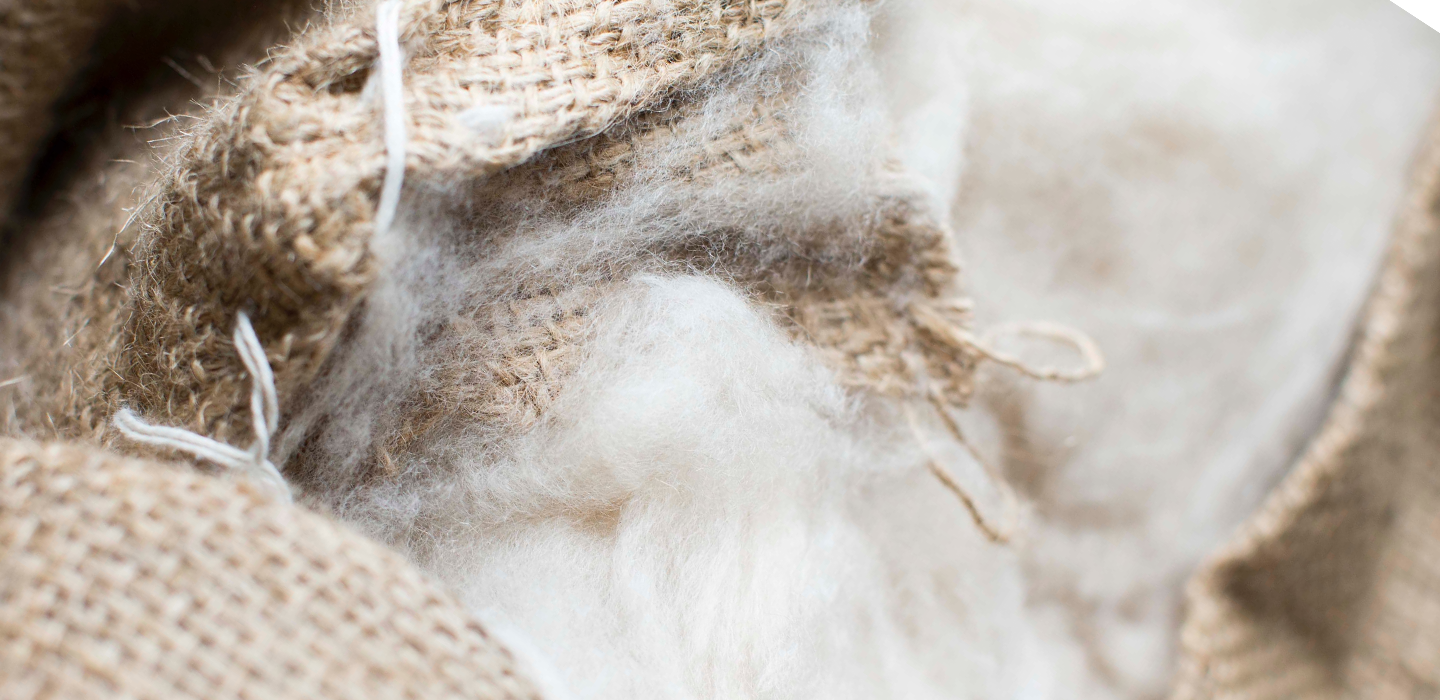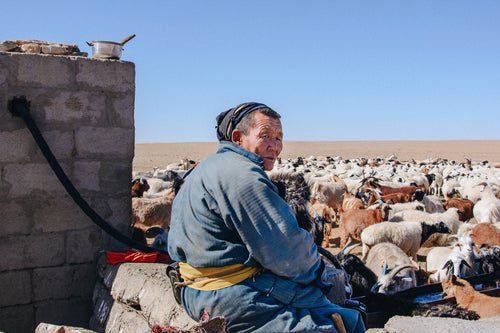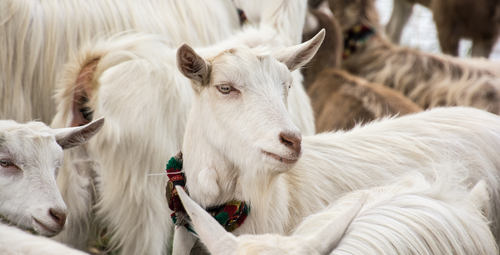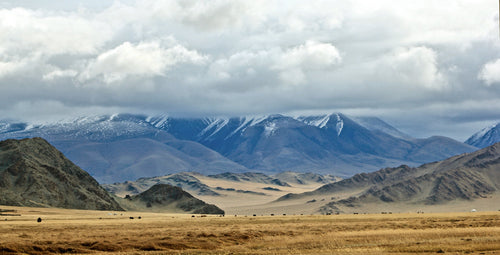Cashmere FAQ

What is cashmere?
This special yarn comes from rare fibres found in the undercoat of cashmere goats. These particular goats live mainly in Mongolia and Inner Mongolia China, a region characterised by wide temperature fluctuations between seasons.
Cashmere goats adapted to this harsh climate by developing a double fleece: an outer guard layer that protects the undercoat from water, and an undercoat made of ultra-fine hairs with strong insulating properties. This keeps the animals warm in the winter but not too hot in the summer.
The fibres are collected through a very laborious and difficult process and are then divided into different quality ranges, based on thickness, length and colour.
In the next stage fibres are dyed and spun into yarns, which are widely used in the garment industry, either knitted into jumpers and similar products or woven into fabrics for premium suits or accessories.
Why do we prefer cashmere over wool?
Warmth – The insulation capacity of cashmere is 3 times higher than wool (up to 8 times for the best cashmere), making it perfect for maintaining body temperature. The result is a yarn that keeps you warm but never overheated.
Softness – The diameter of cashmere fibres is very small, resulting in a very fine texture; the softest of all yarns.
No itchiness – For the same reason, the density of fibres is much higher than wool, and therefore the texture is not scratchy. This gives a great feeling when wearing cashmere directly on the skin or when touching a jumper.
Lightness – Given the strong insulating capacity, cashmere jumpers can be lighter than ones made of wool and still keep the perfect body temperature.
Why do Cashmere and Wool Pill?
This happens when short fibres twist around themselves in areas of the jumper where there is more friction, creating small bobbles. This phenomenon is inevitable due to the presence of shorter fibres and it afflicts expensive cashmere as well.
However, in the latter, it should stop after the first few washes, and it should be much less than in cheaper alternatives (where fibres are much shorter). Don’t worry, normal pilling is easy to remove with a cashmere comb, shaving machines or even simply by hand.
How do I care for my cashmere?
Quality cashmere does not shrink when washed correctly and will retain shape better than wool over the years. For ease, you can dry clean cashmere, however, it is more than happy to be hand washed also.
Hand wash:
Fill your basin with cool water and add a small amount of very soft detergent. Turn your cashmere inside out and place it in the basin, then leave for ten minutes. After it has soaked, rinse well with cool water.
To rinse, lay your garment flat over a towel. Gently roll the towel up and press it lightly to remove the moisture. Once this is done, reshape the garment by hand and leave it flat to try (avoid direct sunlight or heaters).
Once your cashmere is fully dry, place it in an airtight bag and store it in the freezer for 48 hours. This will kill any moth larvae or eggs. We recommend storing cashmere flat (to avoid any unwanted stretching) in a drawer, preferably in tissue paper with mothballs, or cedar wood.

Sustainability
arch4 cashmere is traceable and responsibly sourced. Our process is certified by the Global Organ...
Baby Goat Cashmere: Soft Gold
This superior, and incredibly special yarn comes from rare fibres found in the undercoat of baby...